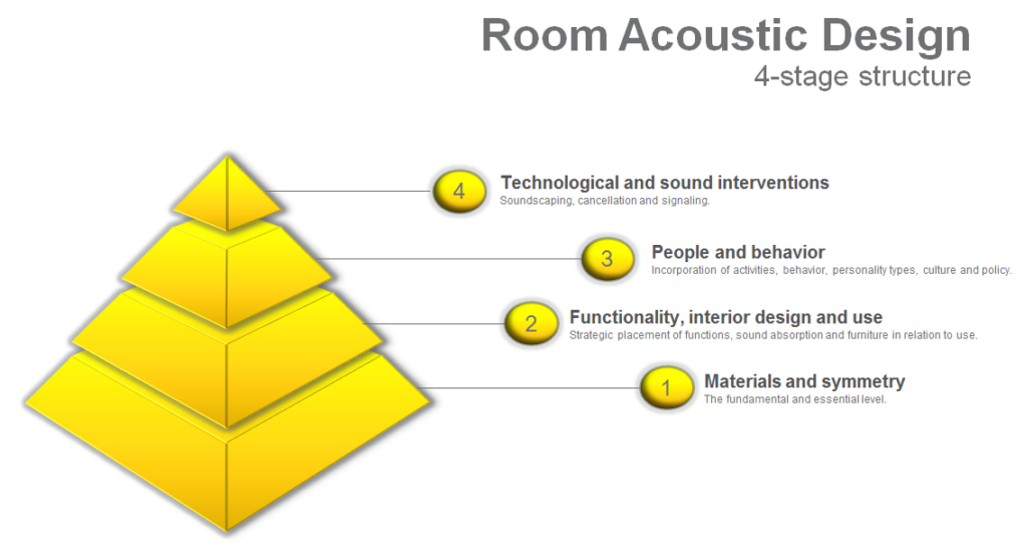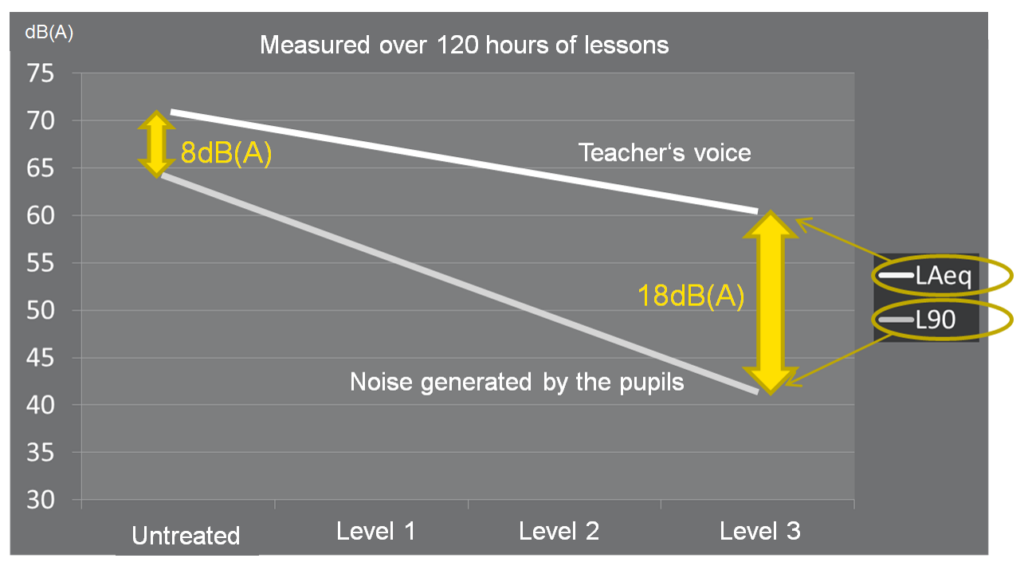
An extensive well-being survey maps noise problems in Danish schools. About one in ten children from preschool to the third grade can’t hear the teachers instruction because of noise.
Sound and acoustics is sadly often far down on the list of priorities in the design of buildings. However, this problem becomes particularly absurd when even rooms and buildings specifically intended for speech cannot fulfil their own purposes. Many classrooms are particularly good examples of these kinds of blunders.
The Danish Ministry of Education has carried out a national well-being survey on noise in Danish primary schools and the result shows that there is still a long way to go before Danish children’s schools and classrooms no longer stand in the way of their learning. In over 482 or about 43% of the country’s schools over 10% of students have difficulties even understanding what the teacher is trying to convey.
If you know a little about how our brains interpret speech in noise, these figures should seem far more alarming than they appear at first. This is due to the fact that there are many nuances of disturbance before the children can’t actually understand the teacher anymore.
If the children expend a lot of brain power to filter out the noise around them they have far fewer mental resources to understand, remember, to form associations and, not least, to participate actively in the lesson.
The Danish Broadcasting Cooperation have summed up the well-being survey in the article: “Ssh! Vast difference in how much harmful noise children experience in school.” (Danish article): https://www.dr.dk/nyheder/regionale/sjaelland/ssh-stor-forskel-paa-hvor-meget-skadelig-stoej-boern-oplever-i-skolen
What makes this article particularly interesting is that it actually maps out all the Danish schools through an interactive map where parents can review the state of noise problems at each specific school.

Although the article conveys many good points about children’s reaction to noise, it seems to lack more constructive suggestions on how the problem can be remedied. Unfortunately, all that the article mentions is the use of quiet zones in schools. However, within acoustic design this kind of intervention is one of the last things that you would suggest in relation to noise problems.
The first thing to consider is the room’s materials and symmetry. In fact, the changes in noise level through acoustic treatment can be so significant that one cannot compare at all an acoustic intervention with a behavioral intervention such as quiet zones.
Interventions in acoustic design can be conceptualized as a four level pyramid, with the most fundamental and important level at the bottom and every subsequent level becoming less important and more ineffective if the levels below have not been properly addressed.

First, one should always make sure that classrooms are equipped with a class A acoustic ceiling. If not, this is definitely the place to start. Often, a low-quality acoustic ceiling must be replaced, but in some cases it can be upgraded and in other cases the ceiling suspension system can be reused. Read more about Ecophon’s approach to acoustics in schools here.

In the Essex study from England, noise levels in classrooms with different levels of acoustic treatment was mapped. The study clearly showed a connection between noise level and acoustic treatment and also that the relationship between noise and the teacher’s voice increased. In practice, this means that the better acoustic treatment a class room has, the better the children can understand what the teacher is saying and the less noise is generated.
You can learn more about the Essex Study and read the full report on Acoustic Bulletin here.
If reading about this recent Danish acoustic survey motivates you to look into the quality acoustic and learning conditions further, you might be interested to read more about the new comprehensive OECD School Users Survey on Acoustic Bulletin here. This users survey for both teachers and students, creates the opportunity to identify and address any potential issues to improve the effectiveness of schools worldwide.

